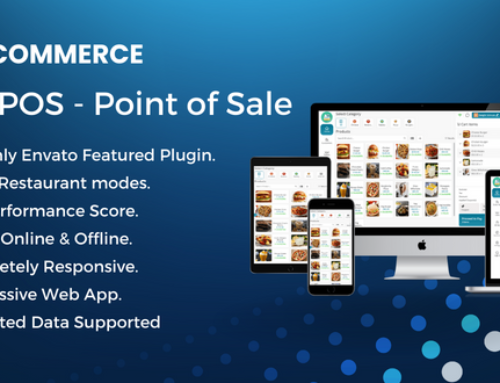Omni Channel Sales module for Perfex CRM
Sales Module refers to the strategy of selling products through various sales channels, both online and offline. It involves the distribution and availability of products across multiple platforms to reach a wider customer base. This approach allows businesses to cater to the preferences and convenience of their customers by providing them with various options to purchase products.
In today’s digital age, Module selling has become increasingly crucial for businesses to remain competitive. By utilizing multiple sales channels, companies can expand their reach and provide a seamless shopping experience for their customers. This strategy involves integrating various channels, such as websites, point of sale (POS) systems, sales portals, WooCommerce multiple stores, manual orders, and pre-orders, to ensure that customers can access products through their preferred method.
One of the primary benefits of adopting an Module sales approach is the ability to sell products directly through a company’s website. This provides businesses with a dedicated platform to showcase their products and engage with customers on a deeper level. Customers can browse through a wide range of products, read detailed descriptions, view images, and make purchases conveniently from the comfort of their homes. Selling directly through a website also allows companies to maintain control over the entire sales process, from product presentation to order fulfillment.
In addition to selling products on their own websites, businesses can leverage popular platforms to reach a broader audience. For instance, by integrating with POS systems, companies can sell their products in physical retail locations. This enables customers to see, touch, and experience the products firsthand before making a purchase. By diversifying their sales channels, companies can tap into the customer base of these platforms and increase their visibility in the market.
Sales portals provide another avenue for Module selling. These platforms serve as centralized hubs where businesses can list their products and connect with potential customers. By partnering with relevant sales portals, companies can benefit from the platform’s existing user base and gain exposure to a larger market segment. This approach allows businesses to expand their reach beyond their own website and tap into the loyal customer base of the sales portal.
WooCommerce multiple stores is another popular channel for Module selling. This platform enables businesses to create multiple online stores, each tailored to specific target markets or customer segments. By setting up these dedicated stores, companies can customize their product offerings, pricing, and promotions to cater to the unique preferences of each market segment. This approach allows businesses to effectively target different customer demographics and increase their chances of making sales.
Manual orders and pre-orders are additional options within the Module sales module. Manual orders refer to the process of customers placing orders directly with the business, either over the phone or through other communication channels. This method allows for personalized customer interaction and can be particularly useful for businesses with a small customer base or unique product offerings. Pre-orders, on the other hand, enable customers to reserve products before they are officially released or restocked. This approach generates excitement and anticipation among customers and can help businesses gauge demand and plan their inventory accordingly.
By selling products across different popular channels, businesses can distribute their inventory more effectively. This helps to reduce the risk of stockouts and ensures that products are readily available to customers, regardless of their preferred shopping channel. Furthermore, the omnichannel approach allows businesses to provide a consistent shopping experience across all platforms, ensuring that customers receive the same level of service and support, regardless of where they make their purchase.
Why should I be selling?
Omnichannel selling has become increasingly important in today’s digital marketplace. With the rise of online shopping, businesses need to adapt and expand their sales strategies to reach a wider customer base. By selling on multiple sales channels, companies can significantly increase their exposure to potential customers, thus maximizing their sales opportunities.
The modern consumer is no longer limited to a single sales channel. Online shoppers have become more tech-savvy and resourceful, exploring various platforms and websites to find the best deals and products. As a result, businesses that limit themselves to a single sales channel risk missing out on a substantial portion of the market.
One key aspect of omnichannel selling is catering to customer loyalty. Many online shoppers develop preferences for specific sales channels, whether it’s due to convenience, pricing, or trust in the brand. By being present on the channels where loyal customers are, businesses can maintain and nurture those relationships. Failing to be available on their preferred sales channel can result in a loss of sales and customer satisfaction.
Moreover, consumers are increasingly engaging in comparison shopping, where they actively seek out options and prices across multiple platforms. This behavior makes it crucial for businesses to expand their presence to multiple sales channels. If a company is only present on one channel while its competitors are available on several, potential customers are likely to opt for the more convenient option that offers them a wider range of choices.
The benefits of omnichannel selling extend beyond exposure and sales opportunities. It also helps to build a cohesive brand image. When a company is present on multiple sales channels, it demonstrates its commitment to meeting customers’ needs and providing them with flexibility. This consistent presence across platforms fosters brand recognition and trust, ultimately enhancing the overall customer experience.
Implementing an omnichannel selling strategy requires careful planning and coordination. It involves integrating various sales channels seamlessly to provide a unified customer experience. This may include synchronizing inventory management, order fulfillment, and customer service across multiple platforms. By streamlining these processes, businesses can deliver a consistent and satisfactory shopping experience, regardless of the sales channel chosen by the customer.
Furthermore, omnichannel selling allows businesses to gather valuable data and insights. By tracking customer behavior and preferences across different channels, companies can gain a deeper understanding of their target audience. This data can then be used to refine marketing strategies, personalize offers, and tailor the shopping experience to better meet customer expectations.
Benefits
Increase in New Customers and Sales: Implementing effective strategies and initiatives can lead to a significant increase in the number of new customers and overall sales. By attracting new customers and convincing them to make purchases, businesses can experience growth and expansion. This growth may result from targeted marketing campaigns, improved product offerings, enhanced customer experiences, or other business strategies.
Reduced Risk: Taking proactive measures to mitigate risks can be highly advantageous for a business. By identifying potential risks and implementing appropriate risk management strategies, businesses can minimize the negative impacts of unforeseen events. This could involve implementing safety measures, diversifying revenue streams, creating backup plans, or securing insurance coverage. Reducing risk contributes to the long-term stability and sustainability of the business.
Increased Visibility and Brand Recognition: Building a strong brand and increasing visibility is crucial for businesses seeking to stand out in a competitive market. Enhancing brand recognition involves consistently communicating the unique value proposition of the business to the target audience. By effectively promoting the brand through various channels, such as advertising, social media, public relations, and strategic partnerships, businesses can increase their visibility and build brand loyalty.
Increased Number of Touchpoints: Touchpoints refer to the various interactions a customer has with a business throughout their customer journey. Increasing the number of touchpoints means creating more opportunities to engage with customers and provide value at different stages of their interaction with the business. This could include offering multiple customer service channels, implementing live chat support, providing personalized recommendations, or integrating various digital platforms for seamless customer experiences.
Reach Your Audience More Easily: Understanding the target audience and effectively reaching them is essential for business success. By utilizing various marketing channels and platforms, such as social media, search engine optimization (SEO), email marketing, content marketing, and paid advertising, businesses can connect with their audience more easily. These efforts can result in increased brand exposure, higher website traffic, improved lead generation, and ultimately, more conversions.
Learn About Your Customers’ Habits: Gaining insights into customers’ habits, preferences, and behaviors is invaluable for businesses. By leveraging data analytics, customer feedback, and market research, businesses can gather valuable information about their target audience. This knowledge allows businesses to tailor their products, services, and marketing strategies to better meet customer needs and preferences. Understanding customer habits also helps identify opportunities for upselling, cross-selling, and fostering long-term customer loyalty.
Innovative Feature
Product Information Management:
Product Information Management (PIM) refers to the process and software used to centrally manage and organize product information within a business. It involves collecting, storing, enriching, and distributing product data across various channels and systems. PIM systems help businesses maintain accurate and up-to-date product information, including descriptions, images, specifications, pricing, and other relevant details. By having a centralized PIM solution, businesses can streamline their product management processes and ensure consistent and accurate product information across all sales channels.
Order Management:
Order management is the process of handling and fulfilling customer orders efficiently and effectively. It involves receiving orders, verifying their accuracy, managing inventory availability, coordinating order fulfillment, tracking shipments, and providing order status updates to customers. An order management system (OMS) automates and streamlines these processes, allowing businesses to manage orders from multiple channels in a centralized manner. OMS software helps optimize order processing, reduce errors, improve customer satisfaction, and increase operational efficiency.
Centralized Inventory Management:
Centralized inventory management refers to the practice of maintaining a single, unified system to track and manage inventory across all locations and channels within a business. It involves consolidating inventory data from various sources, such as warehouses, retail stores, and online platforms, into a central inventory management system. This centralized approach provides businesses with real-time visibility into stock levels, enables accurate demand forecasting, helps prevent stockouts and overstocks, and facilitates efficient inventory replenishment and allocation.
Price & Promotion Management:
Price and promotion management involves strategically setting and adjusting product prices and promotional offers to maximize sales and profitability. It includes activities such as pricing analysis, competitor price monitoring, pricing optimization, creating and managing promotional campaigns, and monitoring their effectiveness. Price and promotion management systems provide businesses with tools and insights to set competitive prices, implement targeted promotions, track pricing trends, and analyze the impact of pricing strategies on sales and revenue.
Shipping:
Shipping refers to the process of preparing, packaging, and transporting products from a business location to customers or distribution centers. It involves selecting appropriate carriers, generating shipping labels, arranging for pickups, tracking shipments, and managing the logistics and documentation associated with product delivery. Effective shipping management ensures timely and accurate order fulfillment, minimizes shipping costs, and provides customers with reliable and transparent delivery experiences.
Reporting and Invoicing:
Reporting and invoicing are crucial components of business operations. Reporting involves generating and analyzing data to gain insights into key performance indicators (KPIs), sales trends, inventory levels, customer behavior, and other relevant metrics. Reports can help businesses make informed decisions, identify areas for improvement, and monitor their overall performance. Invoicing, on the other hand, involves creating and sending itemized bills to customers for the products or services they have purchased. Invoicing systems automate the process of generating and managing invoices, including tracking payment status, sending reminders, and facilitating seamless financial transactions. Both reporting and invoicing contribute to effective business management, financial control, and customer satisfaction.
Module Features
Order Management: This feature allows users to effectively manage and track customer orders within a system. It provides a centralized platform to process, fulfill, and monitor orders, ensuring a smooth workflow from order placement to delivery.
Manual Order Management: This functionality enables users to manually input and manage orders that may not be received through automated channels. It provides a way to enter orders directly into the system, ensuring accurate and efficient order processing.
Pre-Order Channel: The pre-order channel is a specialized sales channel that allows customers to place orders for products or services that are not yet available. It enables businesses to generate sales and gauge customer demand for upcoming releases, giving them a competitive edge in the market.
Client Portal Channel: The client portal channel serves as a dedicated online platform where customers can access and manage their accounts, view order history, track shipments, make payments, and communicate with the business. It enhances customer convenience and fosters a self-service approach.
POS Channel: The point-of-sale (POS) channel refers to the integration of the order management system with physical retail stores. It enables businesses to process orders directly at the point of purchase, updating inventory in real-time and synchronizing data across different sales channels.
WooCommerce Channel: WooCommerce is a popular e-commerce platform built on WordPress. Integration with the WooCommerce channel allows businesses to manage orders, inventory, and customer data seamlessly between the order management system and their WooCommerce-powered online store.
Data Sync Logs: Data sync logs provide a comprehensive record of the synchronization process between different systems or channels. They capture details such as the date and time of synchronization, specific data sets transferred, any errors encountered, and the status of each sync operation. Data sync logs help identify and resolve any inconsistencies or issues in data synchronization.
Reports: The reports feature generates valuable insights and analytics based on order management data. It provides businesses with various metrics, such as sales performance, order fulfillment rates, customer behavior, inventory levels, and revenue trends. Reports aid in making informed decisions, optimizing operations, and identifying areas for improvement.
Trade Discount: Trade discount functionality allows businesses to offer special pricing or discounts to specific customer segments, such as wholesalers, distributors, or loyal customers. It facilitates the management of negotiated pricing agreements and helps incentivize repeat business and customer loyalty.
Settings: The settings section provides users with configuration options and preferences to customize the order management system according to their specific business needs. It typically includes options for managing user roles and permissions, defining order fulfillment rules, configuring payment and shipping settings, and integrating with other software or services.
Integration: Integration refers to the ability of the order management system to connect and communicate with other software, platforms, or third-party services. It enables seamless data exchange, streamlines workflows, and ensures consistency across various systems. Integrations can include connections with e-commerce platforms, accounting software, shipping carriers, payment gateways, and more.
Conclusion
In conclusion, omnichannel selling is a powerful strategy that enables businesses to reach a wider audience and provide a seamless shopping experience. By leveraging multiple sales channels such as websites, POS systems, sales portals, WooCommerce multiple stores, manual orders, and pre-orders, companies can maximize their sales potential and cater to the preferences of their customers. This approach not only increases visibility and market reach but also enhances customer satisfaction and loyalty, ultimately driving business growth and success in today’s competitive marketplace.








